What was once old is new again. That adage fits very well when discussing linoleum flooring. This flooring type is making a major comeback in homes, businesses and offices alike. If you are choosing new flooring and are considering linoleum, you are in good company these days. Read more to see why choosing linoleum flooring is a good decision you will not regret!
The New Popularity Of Linoleum Flooring
Linoleum flooring is a versatile flooring material that’s making a comeback, largely because being aware of environmental issues like sustainability and the ecological impact our choices make is becoming a more widespread consideration for the general population, from the food and clothes we buy to our home improvement selections. In addition to being an environmentally friendly option, there are a lot of other great features to linoleum flooring that are aiding in the rapid growth in popularity:
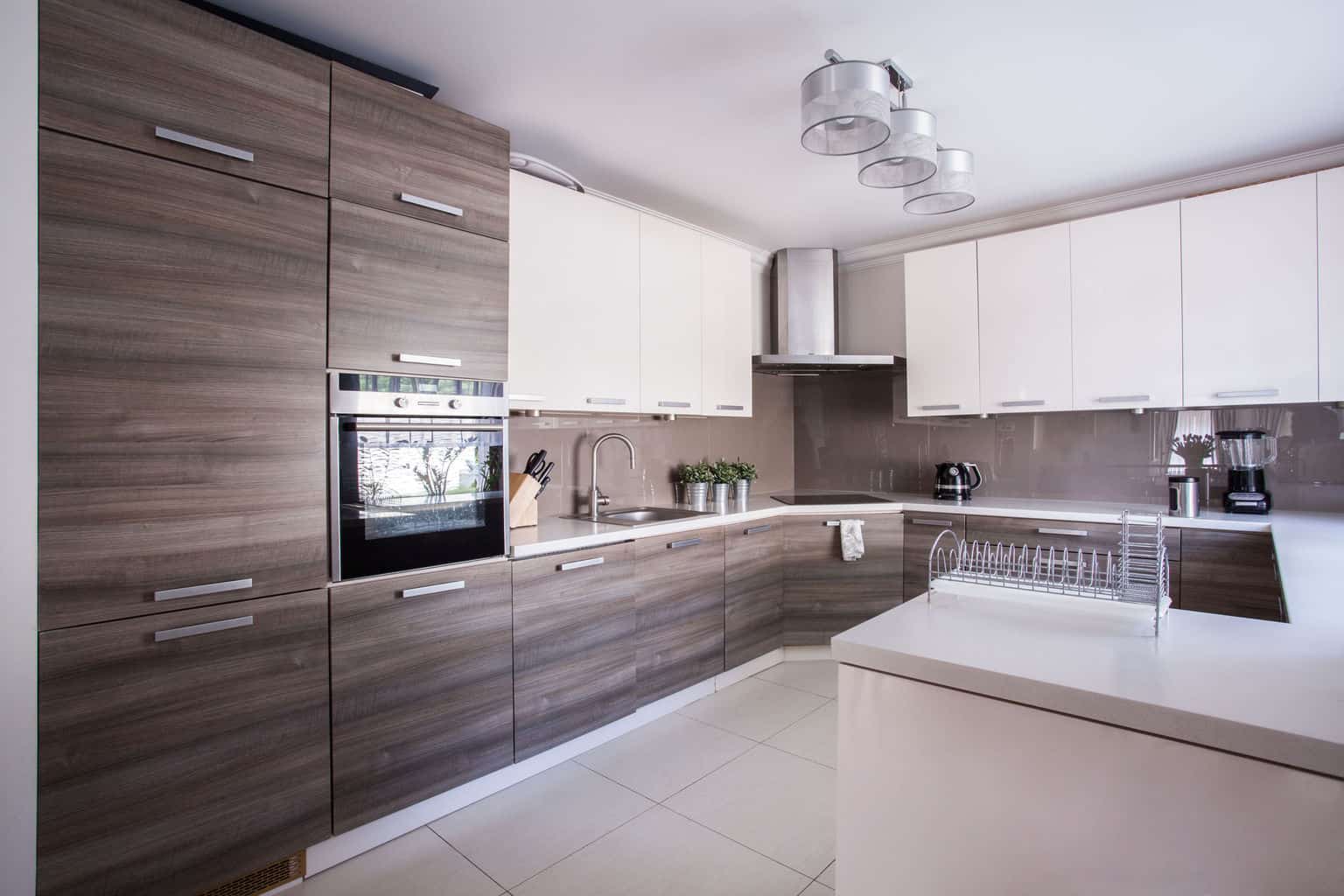
Affordable
Compared to wood flooring, linoleum is much less expensive. Especially if you compare linoleum to environmentally friendly wood flooring options. For example, linoleum on average is around $3-$5 per square foot, whereas cork flooring, a popular eco-friendly flooring option, costs more like $8-$0 per square foot.
Easy
Linoleum is easy to install, easy to find exactly what you are looking for, and easy to maintain and clean. What more could you want from a flooring option in your home?
Durable
Durability is a huge consideration for most when choosing the flooring for their home. Linoleum flooring is one of the more durable options on the market today. It is water resistant, stain and wear resistant, and scratch resistant. Linoleum is pretty much life-proof and yet still beautiful, too.

Ecological
Many are unaware that linoleum is actually made from natural materials: linseed oil, resin, and “wood flour” (essentially very fine saw dust) are the main components used to create linoleum. As we as a society begin to take more environmental impact considerations into our consumer choices, it makes sense that this sustainable, ecologically friendly flooring option is regaining popularity.
Attractive
Linoleum can come in any style and color choice you can think of. It’s also paintable, so you can change it in the future. Also important is that the colorway goes all the way through the material with linoleum flooring, so scratches are less noticeable. Tiles and rolls of linoleum are also available in any width, so finding the design match of your dreams is easy.
What You Should Know About Lino
Did you know you can even use linoleum for countertops? If it holds up to being walked on, it surely will endure kitchen abuse; I love my linoleum countertops! One advantage of linoleum is that the color goes throughout the material; it’s not just a thin top layer. That means when your linoleum floor is scratched or nicked, the damage isn’t as obvious because the same color comes through as is on the surface. This also means that you don’t have to spend anything on polishing after some time. Unlike other materials, linoleum will never fade or lose its shine.

Linoleum was invented in England 1863. It was one of the most popular flooring choices for many years, until vinyl flooring came on the market at an even lower price-point. There are many people to this day who confuse linoleum for vinyl, largely because of the close competition between the two in the early days of vinyl and an intense marketing campaign by vinyl manufacturers. While the terms “vinyl” and “linoleum” are often used interchangeably, really these are two very separate products at their base. Linoleum is made of natural materials and vinyl is comprised entirely of synthetic materials.
Partially due to a recent growth in popularity, linoleum is being manufactured all over the world now. Each linoleum manufacture has its own trade name for the product (Marmoleum and Armstrong Linoleum being a couple popular examples).
Roll And Tiles And All The Styles Of Linoleum Flooring
Options are endless when it comes to linoleum floors. Painting linoleum floors is an interesting option for some situations. Also, linoleum tiles can be laid in any design you might want. As far as the style you want, linoleum tiles and rolls are both good options and selecting which type you choose for your home will depend on the final effect desired. Each type will result in a different look and each type will use a different installation technique.

A roll of linoleum flooring can give you a nice, seamless look that is very sleek and modern. This is definitely a good look especially in a larger space where tiles can end up looking a bit busy and overwhelming. To install a roll of linoleum flooring, you’ll need a level underlayment (like plywood) and a flooring adhesive. You’ll also need a sharp tool for cutting the linoleum to size and a heavy roller for getting out any air bubbles as you roll it out.
Installing linoleum floor tiles is a similar process, though the end result looks quite different. You will still need a level underlayment and a good flooring adhesive, as well as a sharp tool for cutting the tiles to fit. Many find the process of laying tiles to be simpler than dealing with a large roll of flooring, as it’s easier to maneuver tiles.
The linoleum manufacturer should supply you with or at least recommend a brand of adhesive for their linoleum, but typically any quality adhesive designed for linoleum will be about the same. Here is an example of a brand of flooring adhesive I’ve used and been pleased with for linoleum in the past available on Amazon: Weldwood Flooring Adhesive.
Where To Install Linoleum Flooring
The versatility of linoleum is one of the major selling points. Linoleum kitchen flooring can be used not only on the floor, but also as a durable, water-resistant countertop. I love the look of linoleum in the kitchen, in addition to the functionality. It also has a nice softer and warmer feel underfoot than many of the ceramic tile options, making it more pleasant for bare feet.
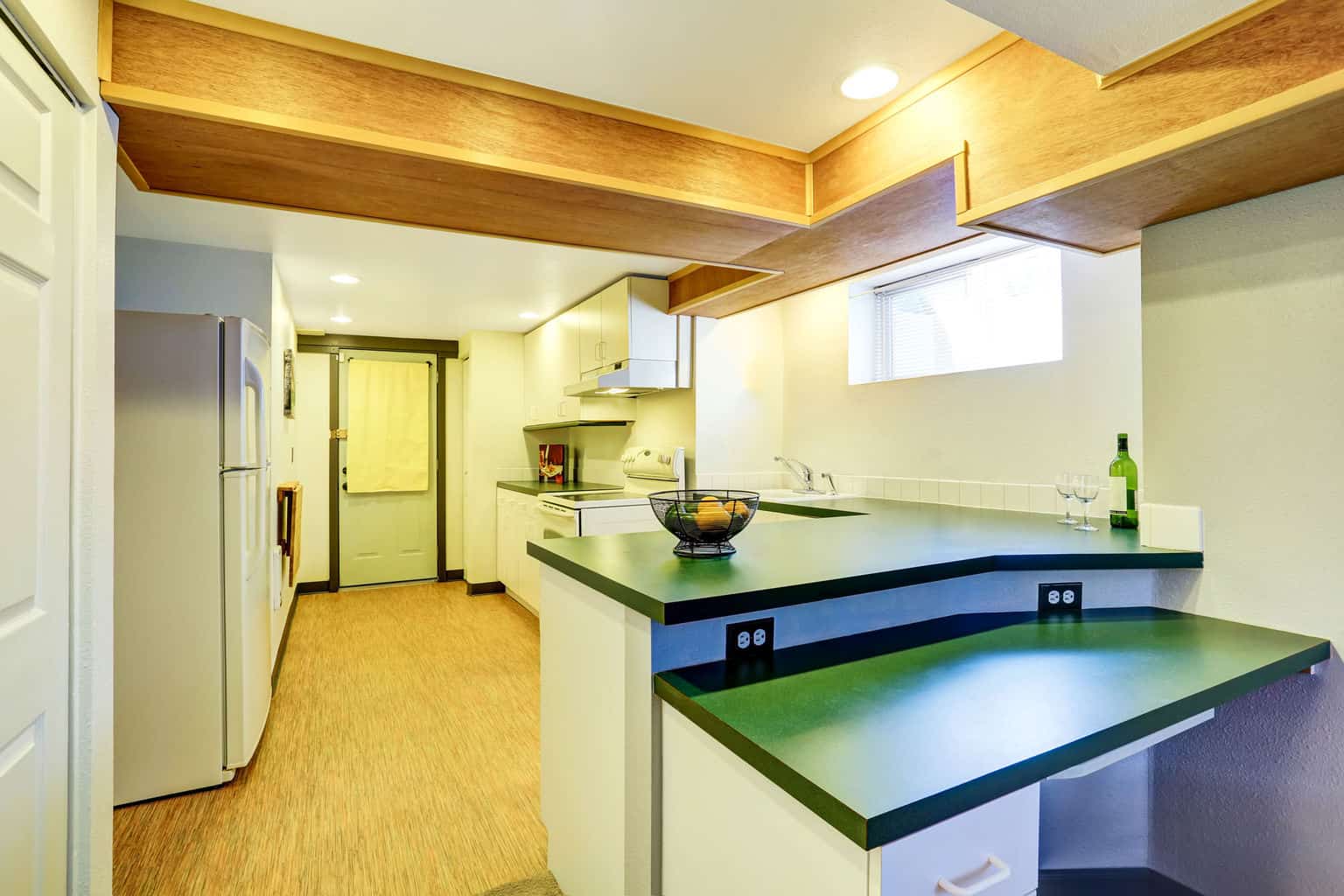
Linoleum bathroom flooring will handle all the water splashing better than many other types of flooring you could choose. Linoleum is a great choice for laundry rooms for this reason, as well.
Linoleum is also naturally antimicrobial, making it an excellent choice for anywhere there are children! I always recommend linoleum flooring for daycare centers and doctor and veterinarian offices, for these reasons. You can install a rolled linoleum flooring up the wall a little ways if you are installing it in a room where you anticipate a lot of spills or mopping will take place. This will protect the lower portion of the walls from water damage, as well.
Maintaining Your Linoleum Flooring
One of the greatest aspects of linoleum flooring is that it is waterproof! You don’t need to reseal it or polish it or apply costly (and toxic) shellac. Simply sweep, vacuum and mop on your linoleum floors as needed, and they will continue to last and shine for decades! Because the color on the linoleum flooring is applied throughout the material, small scratches or dents are not noticeable the way they would be on something like a laminate flooring where the color or pattern is applied only on the top layer.
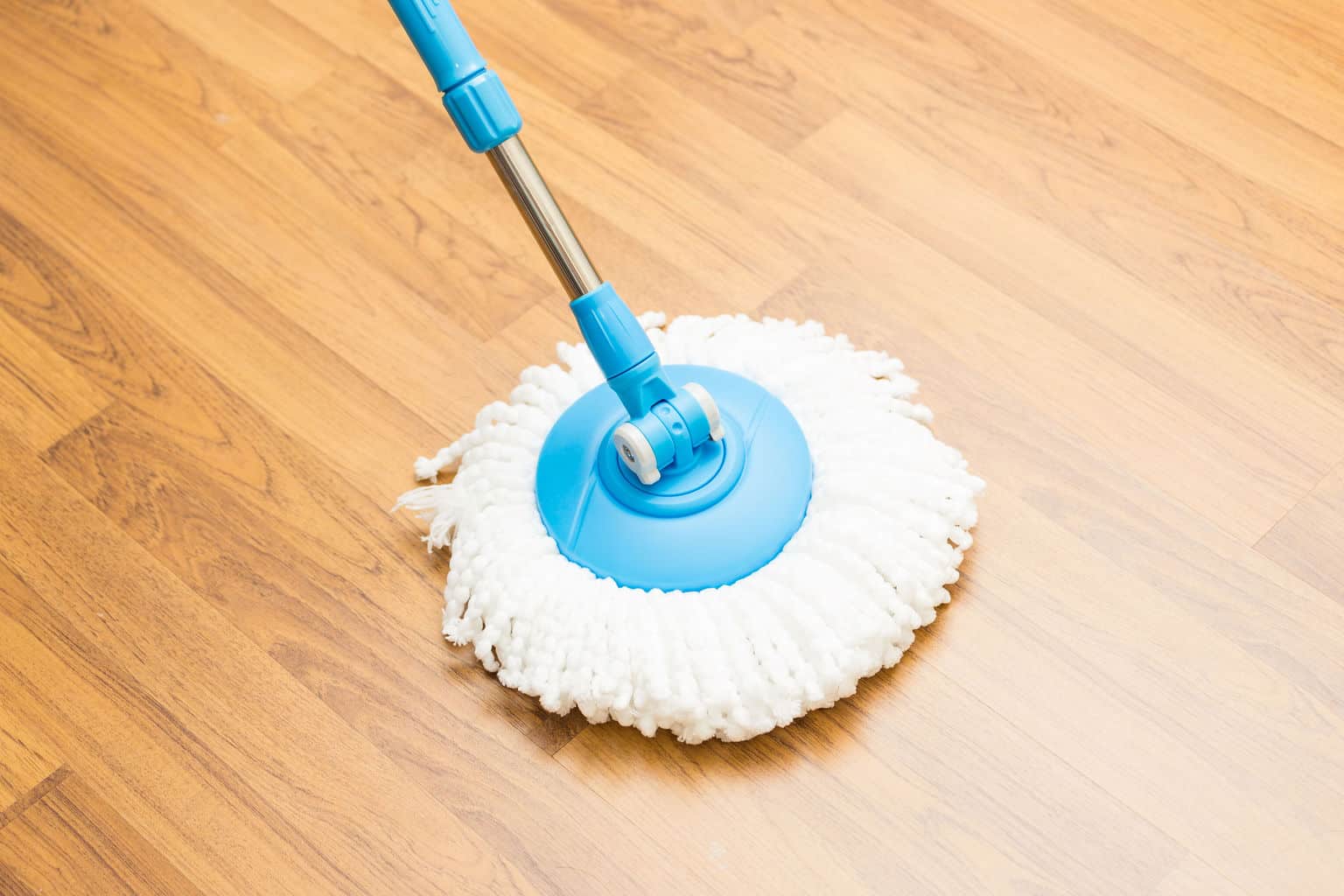
The “bloom” is something you will want to consider when purchasing linoleum flooring. Some complain that their laminate flooring takes on a yellowish staining over time. There are a couple of reasons for a change in color to linoleum flooring. The first is a change in color that is a result of the natural materials in the linoleum coming into exposure with sunlight, often referred to as a bloom. While this is unavoidable, you will simply want to take a sample of the linoleum flooring you are choosing and leave it sitting in the light in the room where you plan to install the flooring for a few days prior to purchasing the flooring to see how the light in that area will affect the color of the linoleum. The other cause for yellowing on linoleum flooring is a result of the antioxidants in rubber coming into contact with the linoleum materials. Avoid using rubber-backed rugs or carpets and rubber protectors on the feet of your chairs and tables on your linoleum, as this yellow staining is irreparable (though you could always try painting your linoleum, if this happens.
Environmental Considerations Of Linoleum Flooring
Linoleum flooring, no matter where you place it in your home, is durable and can last for many decades. Linoleum is made from non-toxic and natural components. This means that at the end of its long and useful life, linoleum flooring is biodegradable. This is one reason why it is attracting a lot of people. It has been amazing how people have become conscious about things like environment friendly paints and floorings when it comes to flooring their home. Anyone who believes that it is high time that we all become a lot more responsible socially should endorse the use of materials that are harmless to the environment.

Linoleum floors are made from all natural materials, like linseed oil pressed from the flax plant, pine resin, wood flour, cork powder, natural pigments and jute. Based on these environmental factors of linoleum, this type of flooring is increasingly chosen before vinyl. Because of its durability, there is more linoleum kitchen, laundry room and bathroom flooring being installed than we’ve seen in a long time. Its toughness and comfort complement each other, making linoleum a solid investment. Since it is sourced from natural sources, the availability of the raw material is never a problem.
Also important to consider about real linoleum flooring is that it is formaldehyde free and there is no off-gassing. This means choosing linoleum flooring for your home is a significant investment in the health and well-being of your family.
Refinishing Linoleum, Painting Possibilites
When you get tired of the linoleum flooring you have, you have various decorating options, such as painting the linoleum with a pattern or a different solid color. Painting your linoleum is a good way to refresh your linoleum without having to remove or replace it. You can also lay new linoleum flooring on top of existing linoleum, if you choose a new style. What a great environmental decision! The same cannot be said about other prominent flooring options available today. Most of them need to be removed completely before replacing them with something new.
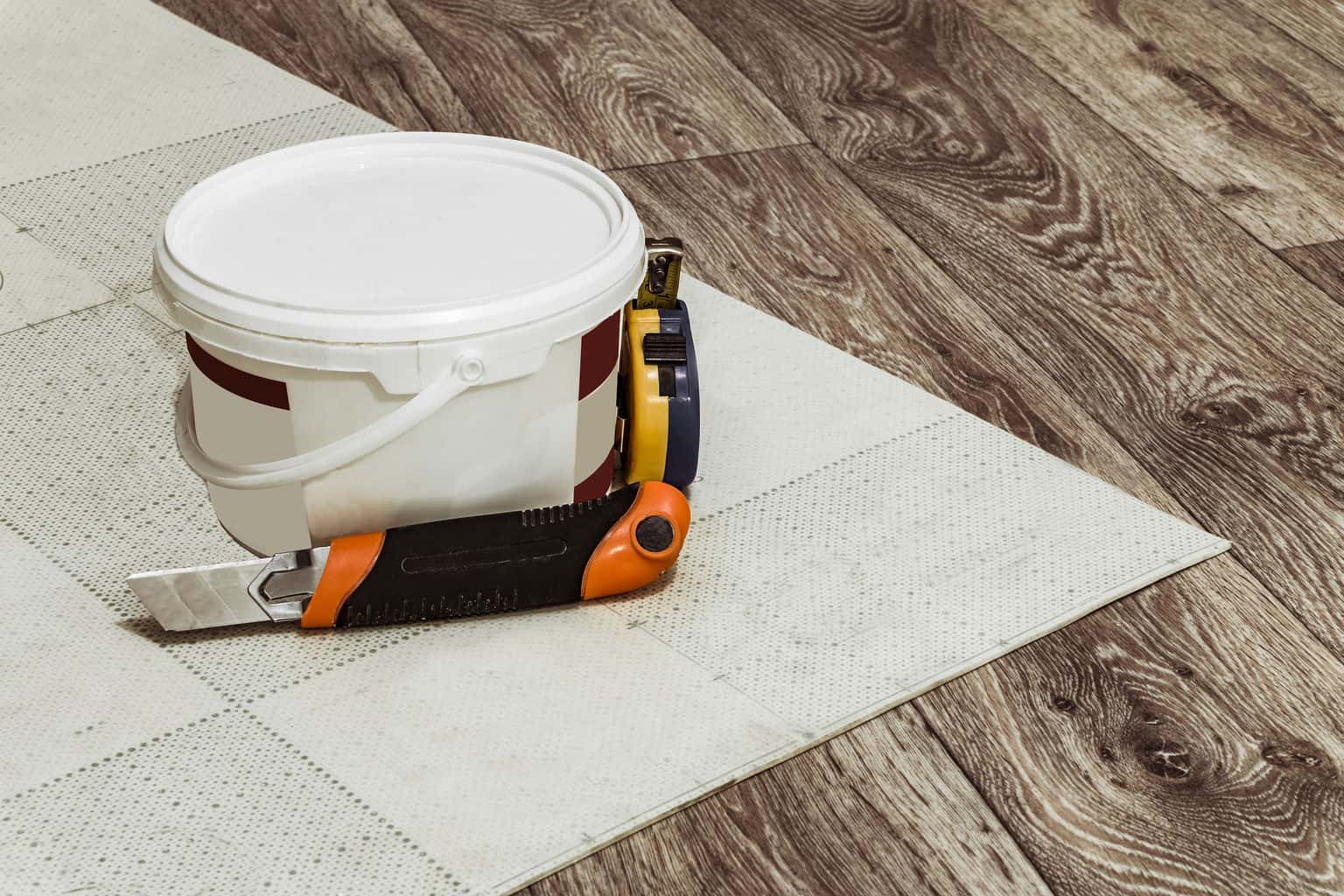
Also, the disposal of other flooring materials poses serious threats to the environment. There are very few people who take the pain to dispose of old flooring properly. Most just prefer dumping it in the next vacant plot. Linoleum, however, is biodegradable.
The Downside To Linoleum Flooring
- The price: Linoleum is a bit higher in price than vinyl. While linoleum is very affordable, if cost is the main motivating factor, the price may be a little too high because it is more expensive on average than most vinyl flooring.
- Not as extravagant: Linoleum is not known for a high-end, luxurious look. While it is extremely functional and can be very modern looking, some worry that installing linoleum will not have the same value-add that installing another more high-end flooring type will.
- Installation: While linoleum is not particularly difficult to install, it is not as easy as simple click and lay laminate plank flooring options. Dealing with adhesive, measuring and laying the tiles, or maneuvering the large rolls of linoleum may be a larger task than some DIY-ers are willing to take on. This may mean hiring a professional to install your linoleum flooring, which does add to the overall cost.
- Chemical exposure: Linoleum is a natural material and is eco-friendly, but most of the adhesives that need to be used when you are installing linoleum flooring are not. If exposure to chemicals are a major concern, you will need to hire a professional to install the linoleum flooring, again adding to the overall cost per square foot of the linoleum flooring.
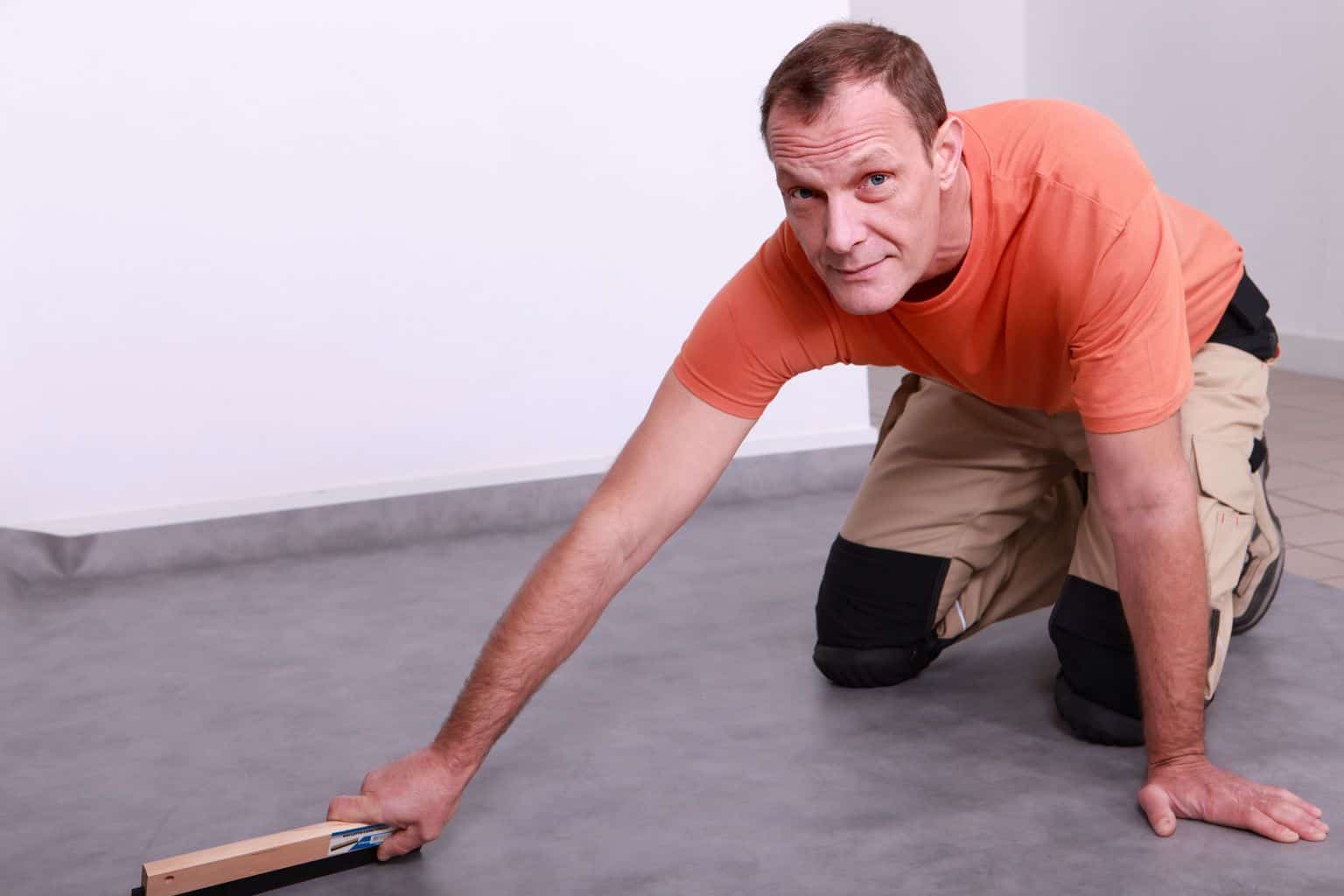
Linoleum can be more expensive than other floorings such as vinyl, but the cost is worthwhile in most situations because the durability of linoleum flooring far outlasts vinyl. Because of its environmental attributes and longevity, linoleum really is worth the slightly higher price tag and the additional effort to install.
If you take the time to compare the pros and cons of linoleum you will see that, in many situations, the pros outweigh the cons. Linoleum can be a great choice for any room in any home. If you are looking for a water-proof, durable, inexpensive flooring option, choose the long-lasting environmental flooring that will continue to look great for decades to come.

Mary, my favorite linoleum is made by Forbo. It’s all natural ingredients and has a long track record.
Cool! Thanks Sandy! Well Mary, there’s one brand to look into for starters – ALL natural materials too!
I bought a house in 1973 that had pretty homely kitchen countertops. I came to love them. They were molded up along the edge to stop run-off, and they were almost indestructable. When I left there in 2003, they looked exactly the same. I can only guess they were linoleum. Now I have some new and “nicer” countertops and I’ve already stained them, am constantly trying to make them look good. My old cheap house had better countertops!
Dear Flooring Lady,
I wanted to let you know that there is one place I know of where you can buy and sell old linoleum. That is Secondhand Rose, in New York City, and on the Web at http://www.secondhandrose.com.
Best regards,
The Grammar Fairy
Dear Flooring Lady,I am building a dental office. I need your advice for type of floor best suited for operatory roomms which will have lot of rolling of dental chairs. How is laminate wood ?. Vinyl needs maintenance of wax and polishing. It should be kind to the feet and appear good. .Please advise
Thanks
Laminiate wood will also need maintenance. I’d suggest epoxy flooring or rubber flooring, even stained concrete for the most durability. Engineered hardwood, laminate wood, ceramic or porcelain tile are also very good options. It doesn’t matter what kind of flooring you decide upon – they all require some degree of maintenance.
Hi…need some help, am inheriting my parents home with old (80?) lin floors. Lin in good shape but out of date style. To save costs, I’d like to cover the old lin with new, in a wood look. Have two small dogs, one 12 lbs., one 5. They occasionally have accidents.
Wondering; will lin hold up to dogs? Can I install over old lin? Does the wood plank looking solid sheet lin really look like wood?
Thanks!
Hi there!
It’s best to put a new subfloor (meaning the thin board, not thicker plywood) over the old lino first. Yes, there is lino that really does look like wood, complete with realistic wood grain impressions.
Lino is a good choice when you have the occasional animal oopsies, just be sure to clean up the mess as soon as possible since urine is so acidic.
I LOVE YOUR SITE. MY LINOLEUM HAS LOST ALL ITS SHINE. ISN’T THEIR ANYTHING I CAN JUST PAINT ON IT TO MAKE A HIGH GLOSS. I AM SO TIRED OF STRIPPING AND WAXING. THANK YOU SO MUCH
If your floor is stripped, you should be able to some water-based polyurethane on it or even a clear epoxy coat.
my neighbor has a problem with her linoleum flooring coming apart. she has lived in this unit for 12 years now .and the landlord says if he repairs it he will raise her rent to market value which is a 1920 buiding with not market value amenities. when she wanted her unit painted he would only furnace the paint.please help us in how to deal with this person.or at least let us know how to find out our rights not just the basic’s in the hand book.
Hi Mark,
I don’t know what state you live in, so I can’t help with landlord/tenant issues. I would advise doing a google search to find information relevant to your state. Actually, the information you’re wanting isn’t relevant to this site, this site is to help with flooring issues, not landlord/tenant problems.
Our new mud room is insulated but not heated from the cold northern New England winters. What are the cons of using a high grade linoleum in an 8×10′ room where there is no heating? (Others tell us if we use ceramic or porclein tile they could ‘pop’ because of the cold regardless of insulating the walls.) How will a 1 piece of rolled linoleum react to the cold? How will tile base linoleum will react to the cold? Would you recommend one type of linoleum over the other? Thank You… Sue
Susie,
Using a high grade, single piece of linoleum will be a perfect fit for a mudroom. Linoleum doesn’t expand or contract like wood or vinyl flooring.
Laying over tile could present a problem as the grout is almost level with the tiles but not quite. The floor must be completely level so the bond of the adhesive is not broken. You can lay a subfloor, a thin piece of wood, to level the floor or you could use latex primer for underlayment and self leveling underlayment. All of those can be found at your local hardware store and if you follow the directions completely you will do fine.
Take a look at Forbo(marboleum)or Armstrong (marmorette)as both stand behind their products and from my experience hold up well.
HI! Our finished/carpeted basement flooded about 3 weeks ago. We have a french drain and sump (with battery back-up), but our power was out for over a day and we were not home to hook up our gas generator to keep the water out. We immediately removed the carpet and padding and have been letting the concrete dry before sealing it (wish we had done that BEFORE laying carpet!). My question is, how long should we let the concrete dry before applying a sealer?
Jenny,
Hi. Where are you located? One option may be to have a professional in your area assess the moisture level in the concrete. Another option would be to complete your own testing by putting down something like baking soda, flour or sugar and see how they react. If they get wet, then the concrete isn’t dry enough yet.
I’M NOT SURE IF I’T LINOLIUM OR CONGOLOIUML. WILL THAT MAKE A DOIFFERENCE ON USING WATER BASED POLYURETHANE OR CLEAR EPOXY COAT. I JUST WAHT A HIGH SHINE BACK. AND I JUST CAN’T KEEP STRIPPING IT AND PUTTING 6 TO 8 COATS OF WAS ON. IT’ A KILLER. I HOPE THIS IS MY DREAM COME TRUE. IT SOUNDS TO EASY.I PUT SOME POLYURETHANE ON BUT IT TURNED YELLOW. I’M NOT SURE IF IT WAS WATERBASED. WHY DID IT TURN YELLOW. THANK YOU FOR A WONDERFUL SITE. JODY
Jody,
Are you applying this just for the increased shine?
Polyurethane is not usually water based and does tend to yellow. One water based polyurethane you could try would be Diamond Coat Varathane Polyurethane.
You should also check with the floor’s manufacturer before applying a varnish to it.
we had someone lay our linolium floor and put in a sub floor, in a week, we see bubbles and lines in the floor, like the pattern came in sheets or something, what should we do [email protected] please email me
Melody,
Linoleum will show bumps and lines of anything that is underneath it, more so as it settles and is walked on. If surface was not prepared for the linoleum after the sub-floor was put it, it could cause this. I would recommend calling your installer and having the problem corrected.